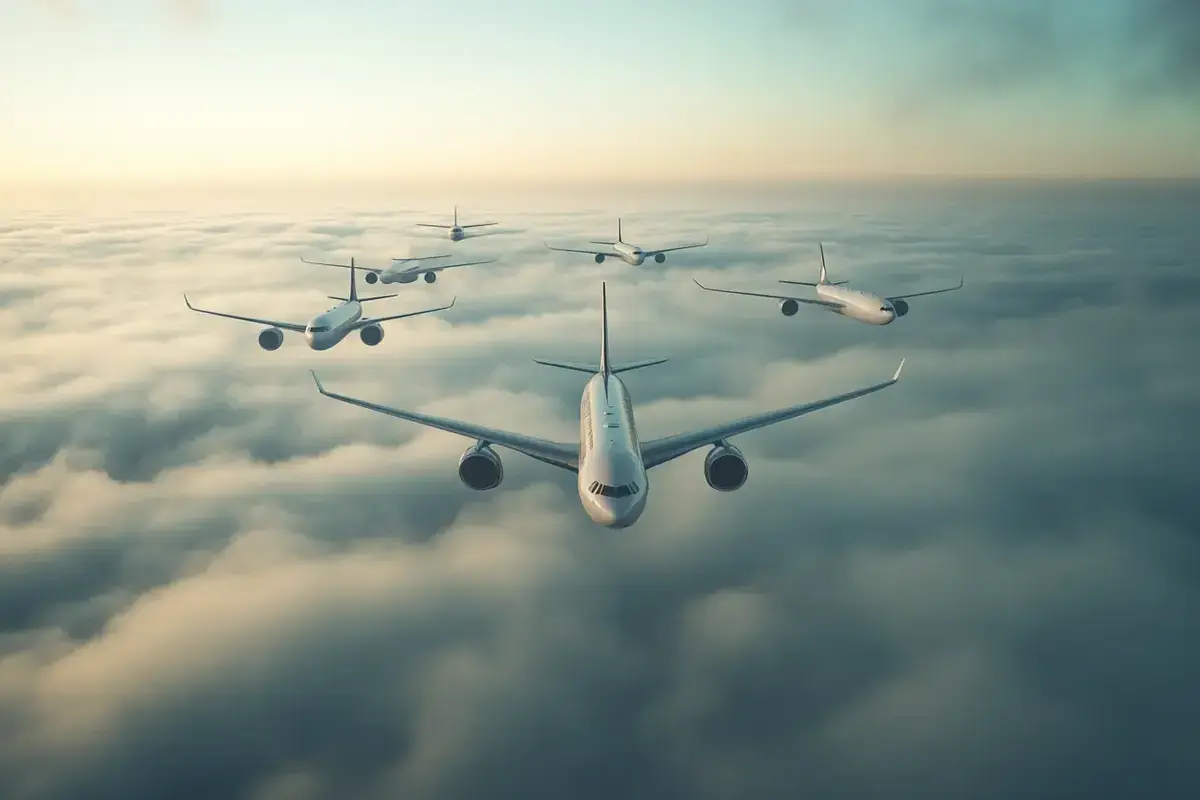Summary
- 🌐 The optical effect and the lack of fixed visual references create the illusion that planes fly slowly.
- 🚀 The actual speed of airliners averages around 500 to 560 mph, with variations depending on the type of aircraft.
- 🛫 The principle of lift and aerodynamics are essential for flight, influencing speed and efficiency.
- ⛽ Fuel economy and the cost of jet fuel are key factors limiting the speed of airliners.
Have you ever wondered why planes, those mighty steel birds cruising our skies, seem to move so slowly when you look up? This question, which piques the curiosity of many sky watchers, finds its answers not in the engines of the planes or their aerodynamic design, but rather in a series of fascinating visual and physical phenomena. Let’s explore together the optical effect that plays a big role in this perception, the impact of absent visual cues, and the actual speed of these giants of the sky, which is much higher than it appears.
A Deceptive Optical Effect
The main culprit behind the impression that planes seem to glide slowly in the sky is an optical effect. When you observe a plane from afar, the absence of fixed reference points and the uniform background of the sky make it difficult to gauge its real speed. This illusion is reinforced by the great distance at which the plane is located, thus accentuating the perception of exaggerated slowness.
Perception Altered by Altitude
The high altitude at which planes fly also contributes to this impression of slow movement. At thousands of feet above the ground, even at speeds of over 500 mph, planes can seem almost static from the perspective of an observer on the ground. This phenomenon is due to the fact that the human eye and brain struggle to interpret relative motion without nearby or clear references.
Understanding the Actual Speed of Planes
In reality, airliners maintain impressive cruising speeds, generally between 500 and 560 mph. Speeds can vary significantly depending on the type of aircraft, with distinct minimums and maximums that ensure optimal efficiency and safety under various atmospheric and flight conditions.
The Crucial Role of Lift and Aerodynamics
Lift and aerodynamics are determining factors that allow planes to fly. The principle of lift explains how moving air under the wings generates a force that keeps the plane in the air. The angle of attack of the wings, which is the angle between the relative wind and the leading edge of the wing, plays a crucial role in optimizing this force and thus in regulating speed.
Factors Influencing the Economical Speed of Planes
Planes do not fly at their theoretical maximum speed for several reasons, primarily economic and technological. Fuel consumption is a major consideration; flying slower than the maximum speed can significantly reduce jet fuel consumption, which is economically beneficial given the high cost of fuel. Additionally, technological limits and regulations on noise and emissions also impose restrictions on speed.
In summary, although planes may seem slow when crossing the vast sky, a series of optical and physical factors affect our perception of their speed. These giants of the air actually fly at speeds that are anything but slow, while being influenced by economic and environmental considerations that optimize their cruising speed for maximum performance.







